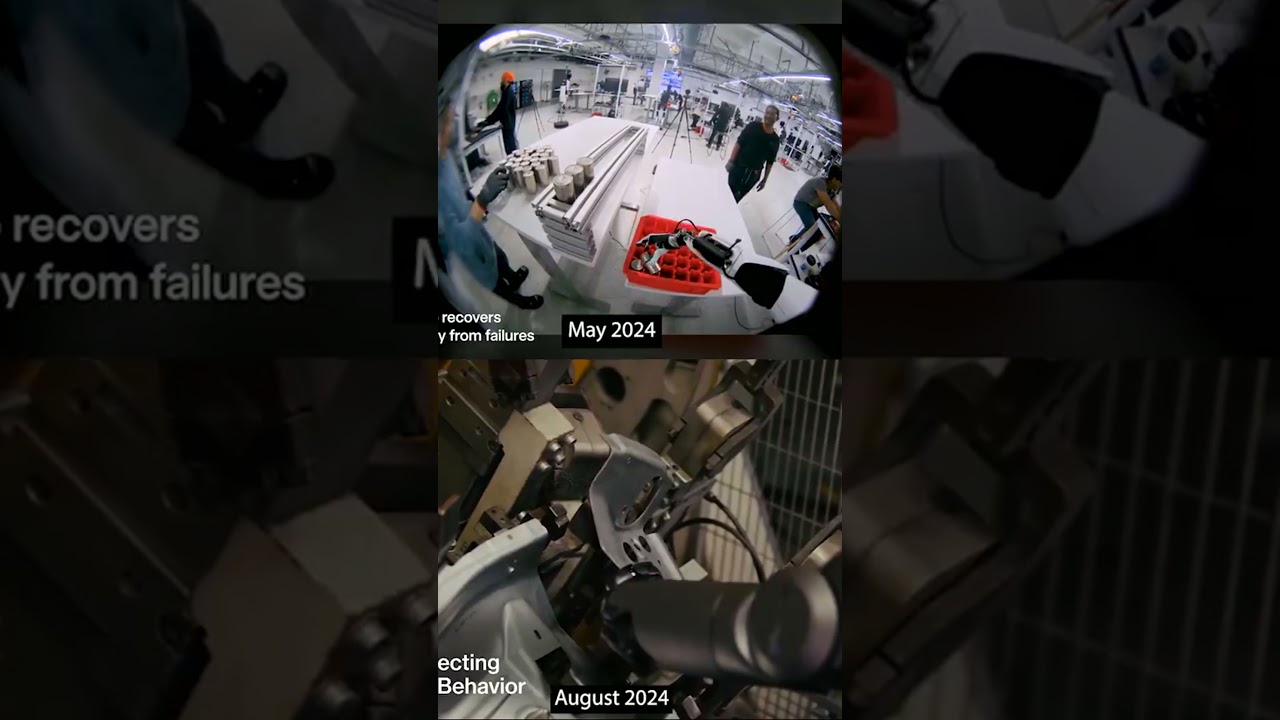The video “AI Robot Breakthroughs: Tesla vs Figure” explores the advancements in robotics by Tesla’s humanoid robot Optimus and Figure’s adaptable robots, highlighting their differing capabilities and applications. It discusses the potential impact of these technologies on productivity, job displacement, and the ethical considerations surrounding their deployment in society.
In the video titled “AI Robot Breakthroughs: Tesla vs Figure,” the focus is on the advancements made by two prominent companies in the field of robotics and artificial intelligence: Tesla and Figure. The video begins by introducing Tesla’s humanoid robot, Optimus, which is designed to assist with various tasks in both industrial and domestic settings. The narrator highlights Tesla’s extensive experience in AI and robotics, stemming from its work in autonomous vehicles, which provides a strong foundation for developing humanoid robots.
The video then shifts to Figure, a newer player in the robotics space, which aims to create robots that can perform complex tasks in human environments. The narrator discusses Figure’s unique approach, emphasizing its focus on creating robots that can learn and adapt to their surroundings. This adaptability is crucial for robots to function effectively in real-world scenarios, where they must navigate unpredictable environments and interact with humans safely.
Next, the video compares the capabilities of Tesla’s Optimus and Figure’s robot. It highlights Tesla’s emphasis on integrating advanced AI algorithms that allow Optimus to perform tasks such as lifting heavy objects and assisting in manufacturing processes. In contrast, Figure’s robot is designed with a more human-like dexterity, enabling it to handle delicate tasks that require precision, such as cooking or assembling products. The video underscores the importance of these differing capabilities in determining the potential applications of each robot.
The discussion also touches on the broader implications of these advancements in robotics. The narrator raises questions about the future of work and how these robots could impact various industries. With the potential to automate repetitive tasks, both Tesla and Figure’s robots could significantly enhance productivity and efficiency. However, the video also acknowledges concerns about job displacement and the ethical considerations surrounding the deployment of such technology in society.
In conclusion, the video emphasizes the ongoing competition between Tesla and Figure in the race to develop the most advanced humanoid robots. It highlights the innovative approaches each company is taking and the potential benefits and challenges that come with these breakthroughs. As the field of robotics continues to evolve, the video encourages viewers to consider the implications of these technologies on everyday life and the future of work.
